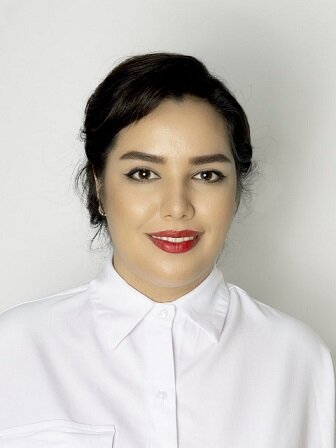PhD defence Leili Esrafili Dizaji
Leili Esrafili Dizaji is doctor of Applied Engineering
The Faculty of Applied Engineering has a new doctor. Leili Esrafili Dizaji (Chemical and Biochemical Engineering Technology) defended her doctoral thesis on the 9th of May ‘Synthesis of new nano metal-organic frameworks with urea and thiourea ligands and investigation of their application in sensing, catalysis, and removal of hazardous materials', with professor Christophe Vande Velde, together with prof. Ali Morsali & prof. Pegie Coolals as promotors.

Everybody today has heard about the increasing need of having cheap, environmentally sustainable and green processes. Metal-organic frameworks (MOFs) are organic (made of carbon atoms)-inorganic (molecules other than organic molecules) crystalline porous materials that consist of metal ions surrounded by organic molecules. The synthesis of MOFs is almost like making Legos, organic and inorganic building blocks assemble and construct a sponge type 3D network. Researchers have synthesized MOFs that feature a surface area of more than 7800 square meters per gram. To put this into context, the available surface area in a teaspoon of this material (around a gram of solid), would cover an entire soccer field. By making MOFs from different metal atoms and organic linkers, we were able to create materials that selectively absorb or detect specific molecules into tailor-made pockets within the structure or catalyse a specific chemical reaction. The advantages of our materials are immense: uniform, reproducible and controllable manufacture, and the possibility to completely engineer all Lego bricks. As a consequence, we can control the whole network structure: we can personalize it, giving new properties to the walls, and tuning the pore size. In this thesis I have designed and synthesized a series of MOFs with different organic functional groups (here Lego bricks) and used them as catalysts, heavy metal adsorbents and sensors. Compared with other conventional porous structures that have been used these 3D structures showed high efficiency and selectivity. The various examples in my thesis will represent you there is much room for research to explore new materials and exploit new territories for potential applications.
